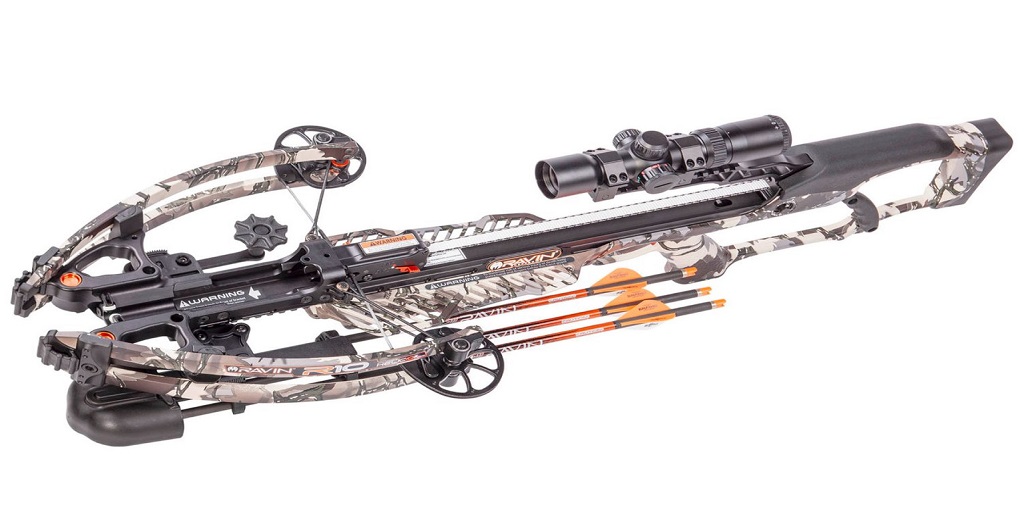Barnett compound crossbows like the Barnett Whitetail Hunter are some of the most popular in the industry, offering high performance at fairly competitive prices.
Doubtless, everything from small game in the eastern woods to elk in the mountains of the west has been taken with Barnett crossbows. They are true workhorses.
But crossbows in general are mechanical machines that are much more complex than simple longbows and recurves. Caring for them is slightly more multi-dimensional.
Yet care and maintenance are tantamount to performance, especially over the long-term. Keep your crossbow in shooting shape with some of the following suggestions.
Wax the String and Cables
Crossbow strings are actually made up of many individual fibers that are held together with slightly adhesive wax compounds.
Together, they are very strong, but if the string dries out, they will separate, fray, and fail. Before every trip to the range or field, feel your string; it should feel like one piece and have a slight tack to it. It should also not feel as if the bow string fibers are separated. They should be tightly joined.
If not, give it a once over with some string wax, and wax the cables, too.
Lube the Rail
Lubing the rail will not only increase the speed and power of your cross (albeit slightly) but it will substantially diminish wear on the string.
Lube your rail before cocking when you’re hunting, and after every 40-50 shots or so at the range.
Lubricate the Trigger, Axles, and Cam Bearings
A drop of oil on the trigger, axles, and cam bearings will keep them moving smoothly, prevent grittiness and wear, and have your crossbow firing more smoothly.
Oil Any Exposed Hardware
A single drop of oil on each metal bolt, screw, or fastener is a good thing, but here you are not trying to lubricate but to protect against corrosion.
Screws, nuts, bolts, and other hardware, when exposed, take the brunt of the elements. A single drop of oil on each before you venture into the brush can keep water and corrosive compounds off of them, extending their usable lifespans.
Periodically Retighten Hardware
Before you take your Barnett crossbow hunting, tighten all of the exposed fasteners. For this, you’ll need a combination of a Phillips head screwdriver, socket bits and drivers, and an Allen wrench.
Go around the crossbow once and make sure everything is tight before shooting. When at the range, tighten your hardware after every 50 shots or so.
Do NOT Leave It Cocked
It’s alright to have your crossbow cocked for a few hours – in fact, this is normal. But at the same time, you should not let your crossbow sit cocked – Barnett, compound, or otherwise, for more than a day.
But even if you’re not loosing the string on your intended quarry, you need to let that pressure off. Leaving your crossbow cocked for long will result in limb fatigue, which will diminish your crossbow’s power and speed.
NEVER Dry-Fire Your Barnett Crossbow
All the same, never dry-fire your crossbow. If it’s a matter of leaving it cocked or dry-firing, leave it cocked.
Also, even expensive bolts are worth a lot less than your crossbow, so if you need to ruin one to decock it, so be it.
But, with that said, most hunters carry special decocking bolts that they use to decock the crossbow in the field.
Another option is to carry one spare bolt with a field tip for the purpose of decocking – especially if it’s an old bolt that you don’t plan on using for hunting anyway. Shooting this into soft ground at a relatively steep angle is a generally-accepted safe method for discharging a crossbow at the end of a hunt.
Bonus Tip: Don’t Shoot Bolts with Loose Heads or Deformed Nocks
One more tip to keep your gear in good shape – although it doesn’t have to do with your crossbow, necessarily: don’t shoot bolts with loose heads or deformed or loose nocks.
Shooting bolts with loose heads will not damage your crossbow, but it will destroy the bolt. Before you cock the crossbow and nock a bolt, be sure the head is tight.
As for the nocks, if they are loose, they can cause catastrophic damage to the bolt shaft, and if deformed, they can cause the string to “miss,” sliding over the bolt and shearing off the fletching. Worse, this can damage the string and possibly the bow.
Keep these tips in mind as your season continues, and be safe out there.



